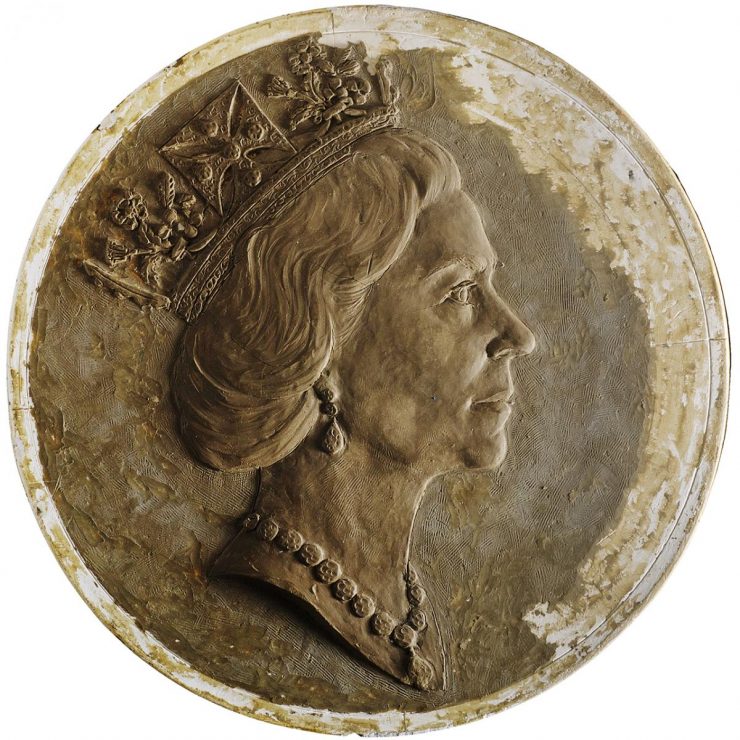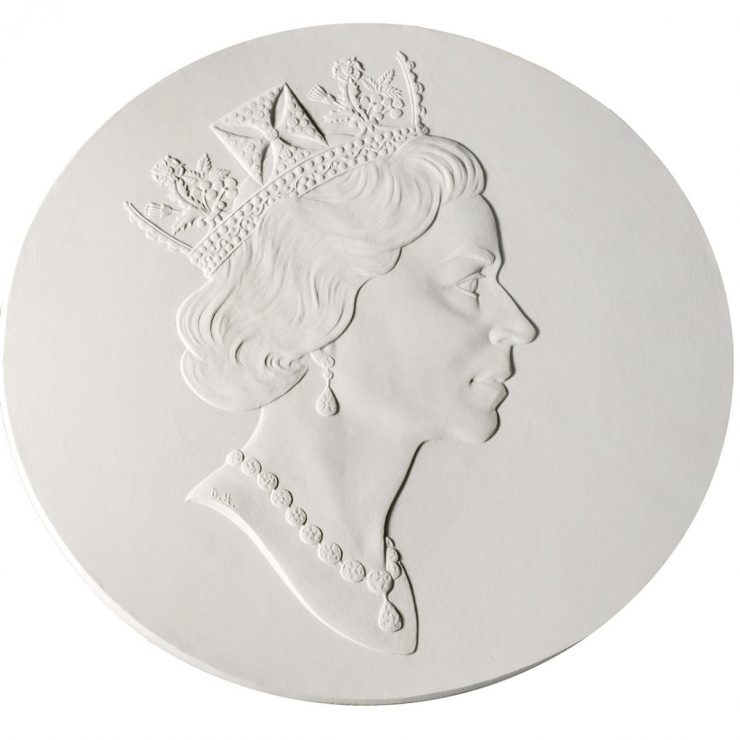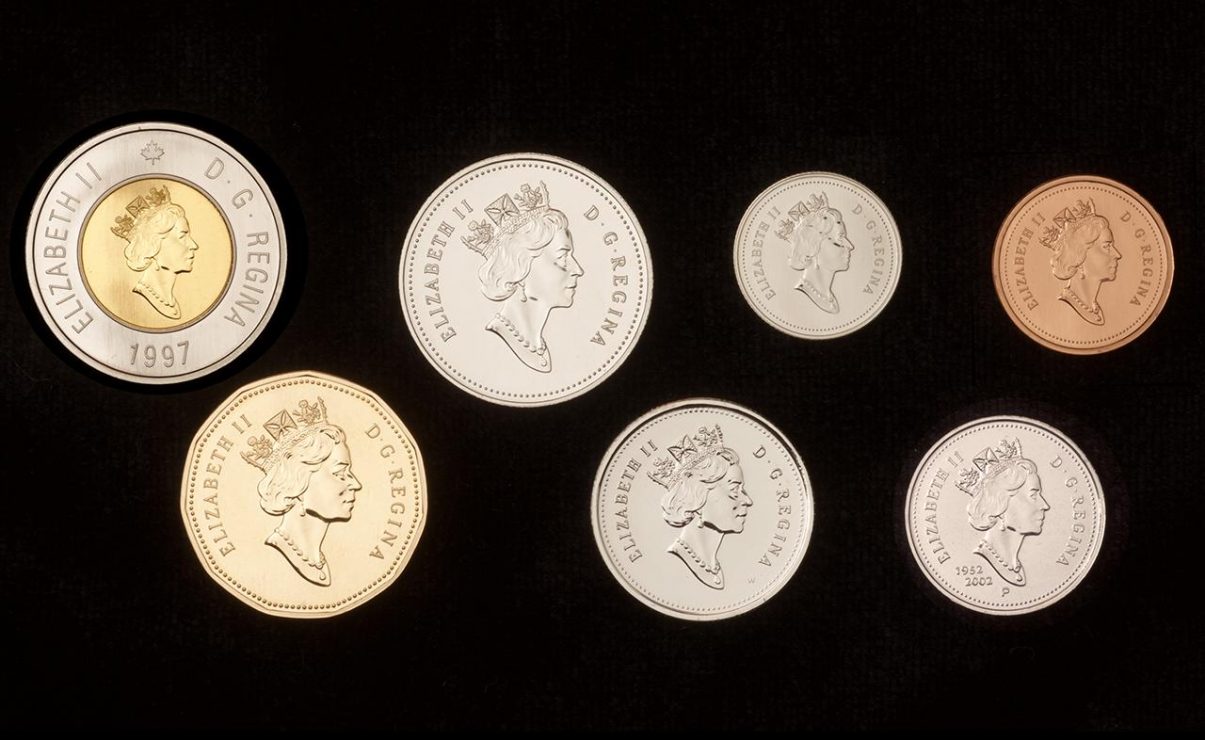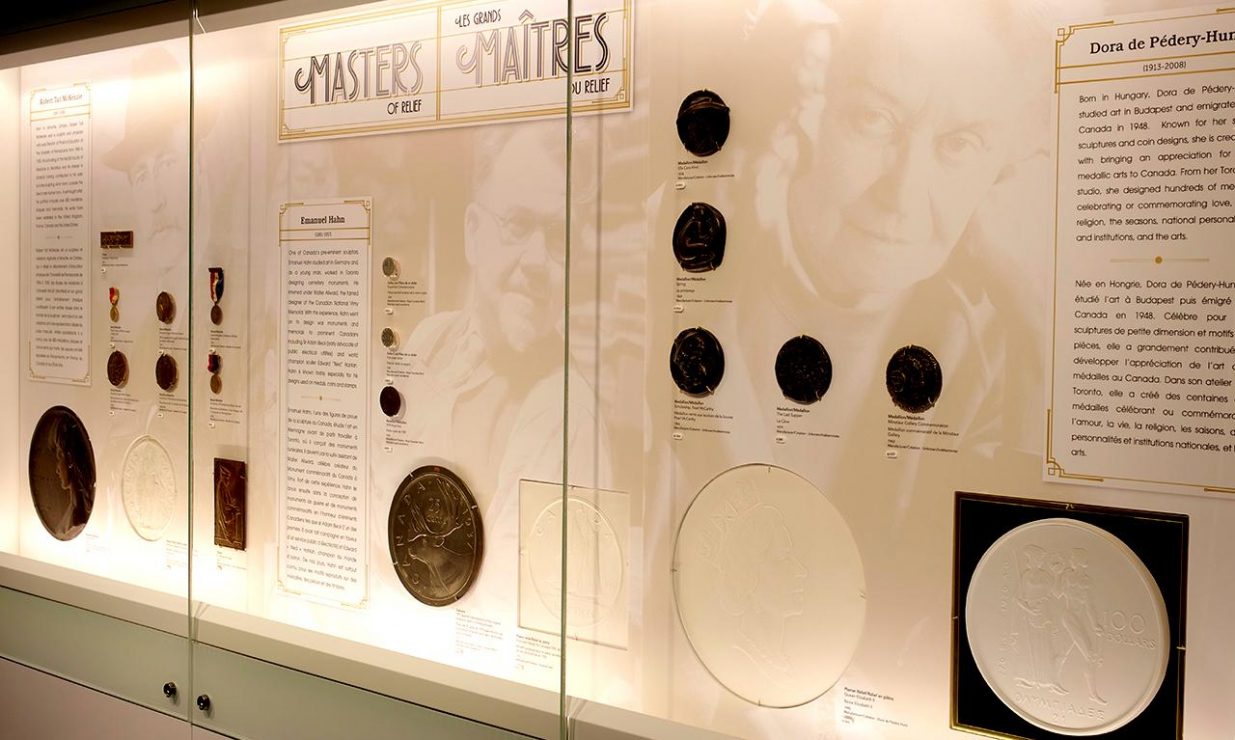Sculptor Dora de Pédery-Hunt
You will not see Dora de Pédery-Hunt’s signature on any coin, but you will see her initials on the Queen’s shoulder.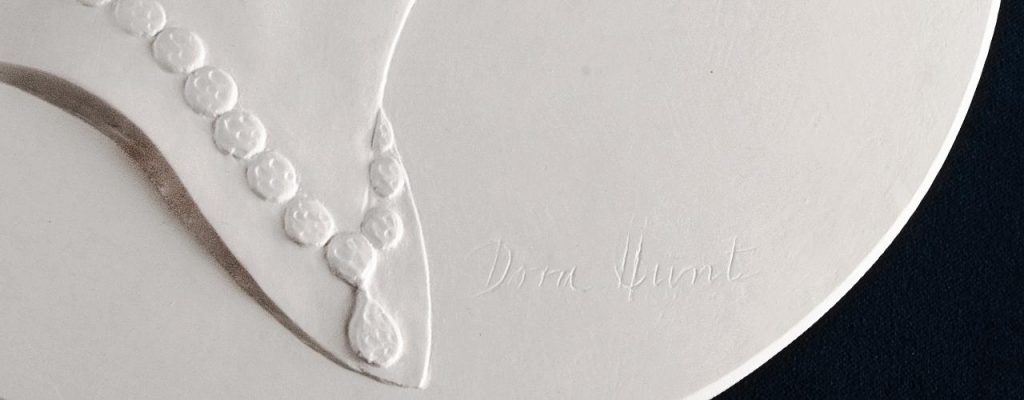
Limited Edition plaster reproduction of working model, #21 of 275. (NCC 2009.020.003)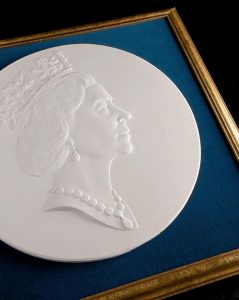
Dora de Pédery-Hunt’s work is as familiar as the change that jingles in your pocket. In all likelihood, you have come in contact with her work while using coins to pay for your morning cup of coffee. Dora de Pédery-Hunt was the first Canadian artist to design and sculpt an effigy of Queen Elizabeth II for coinage. Incidentally, this was the first time someone other than a British citizen had designed an official depiction of Queen Elizabeth II for this purpose.
When the Royal Canadian Mint (RCM) selected Dora’s design, she painstakingly began working on a clay model. All of the details had to be carefully considered, as the depth of the relief had to be suitable for producing coins. This model was then captured in plaster, where additional refinements could be made. Any errors could easily be corrected at this stage with the addition of more plaster. The size of the plaster is usually several times larger than the actual coin in order to capture all of the fine details.
At the time, there were many steps between the plaster model and the production of coins. Today, the process has been significantly refined. The plaster model is scanned in 3D and any final corrections or enhancements can be made digitally. Guided by this digital file, an engraving machine cuts the design into a piece of steel at the correct size of the coin. Known as a reduction punch, this piece of steel is then used to make the dies which will actually strike the coins. The tremendous pressure used to strike the coins wears down the dies, so the mint will periodically use the punch to create new dies.
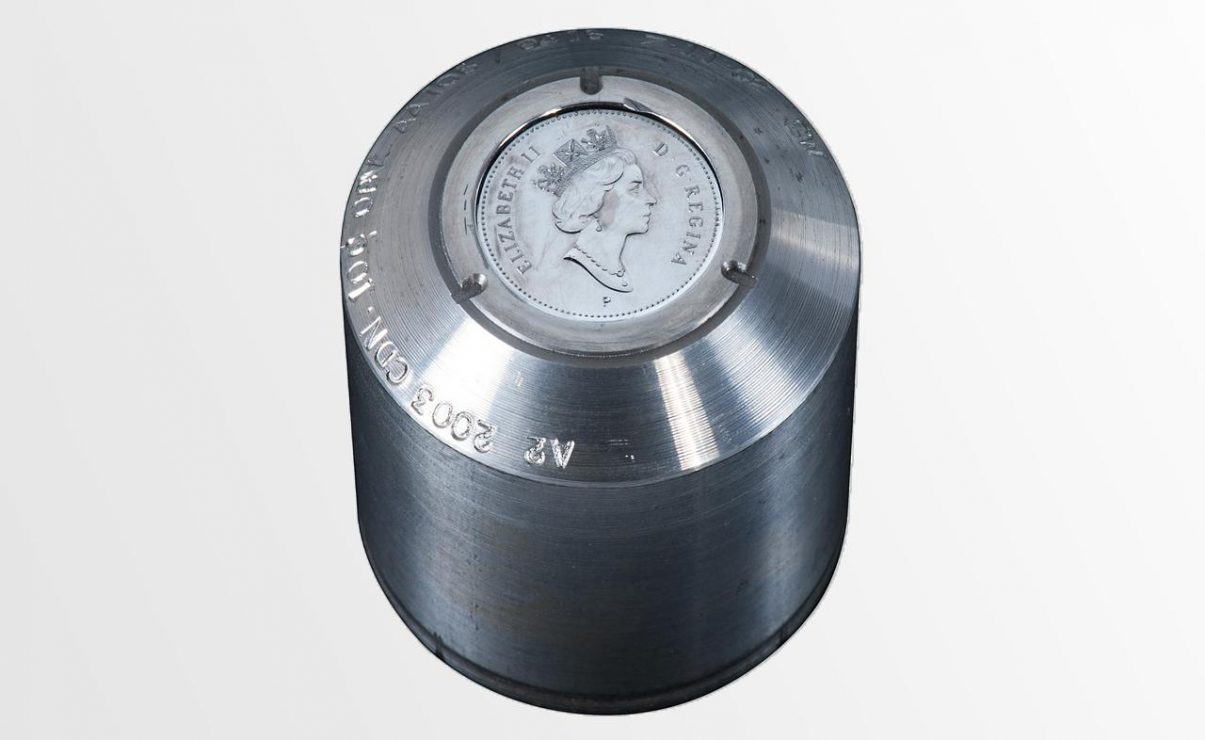
In 1999, the “P”, under the portrait on this punch, was added by the RCM to indicate a change in metal from nickel to multi-ply plated steel. (NCC 2010.058.006)
This portrait has appeared on all Canadian coins minted between 1990 and 2003.
The Museum Blog
Money of the First World War
By: Paul S. Berry
In Europe, gold and silver coins largely disappeared from circulation as they were hoarded or as governments used the metal for the war effort.
Money’s Magnificent Moustaches
By: Graham Iddon
We would like to present some of history’s great moustaches—as seen on bank notes.
The Devil is in the Hairdo
By: Graham Iddon
Have you ever seen eyes in the bark of trees? Wolves in the clouds? How about spooky things in bank notes?
Canada Financially Comes of Age
By: Paul S. Berry
The First War Loan included bonds in denominations of up to $100,000. They matured in ten years and paid interest at 5 percent.
#AskACurator Day 2018
By: Graham Iddon
What would you ask a curator? Your chance was September 12, when the annual Twitter event #AskACurator Day took place on computers, tablets and mobile phones all around the globe.
Happy Birthday, Dear Bank of Canada Museum!
By: Graham Iddon
A little grade 8 math revealed that, since our last full year of operation, we have increased Museum attendance by 91 per cent (pause while the audience claps).
Operation Fish
By: Robert Low
Operation Fish was the largest movement of physical wealth in history.
